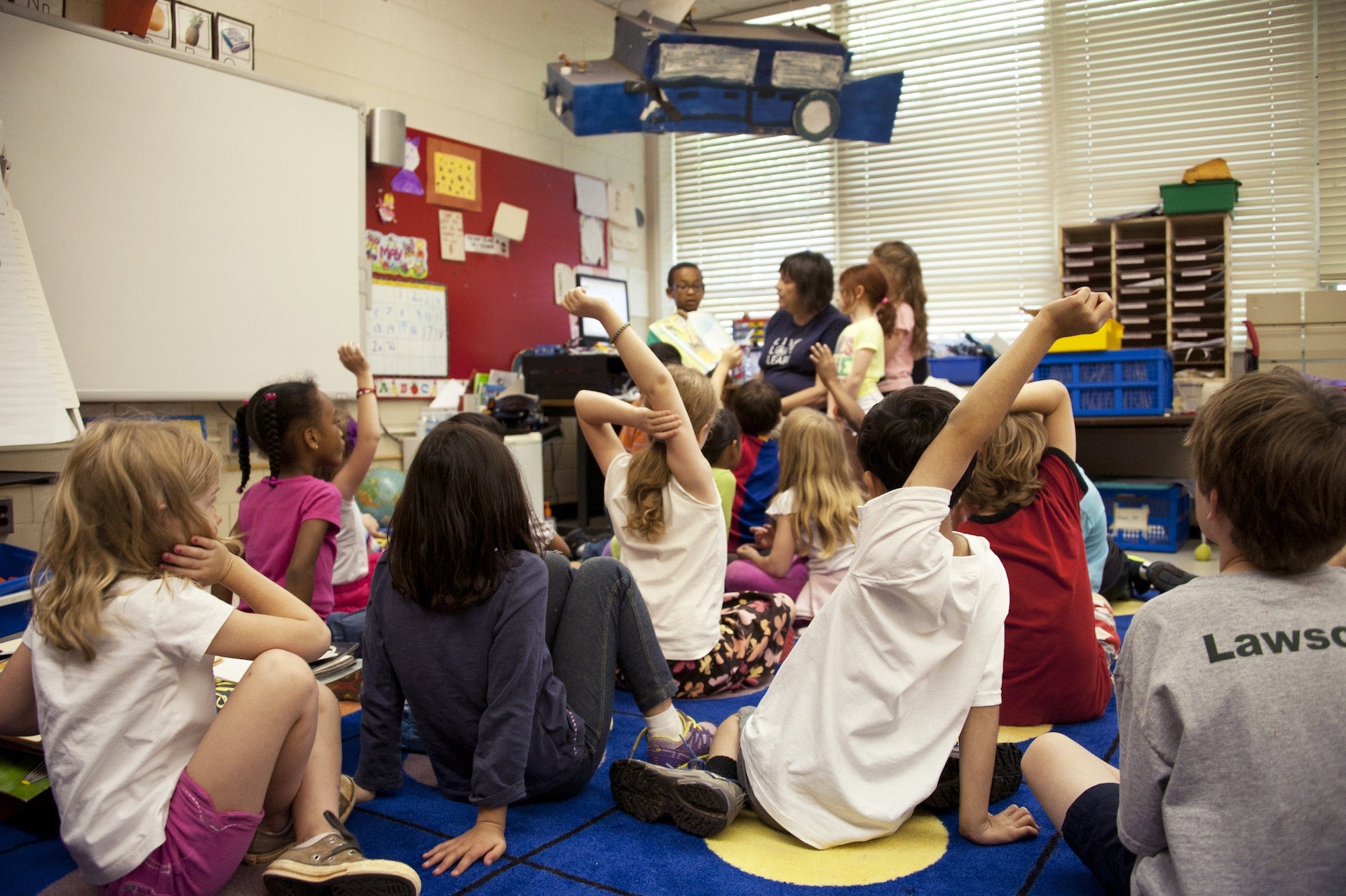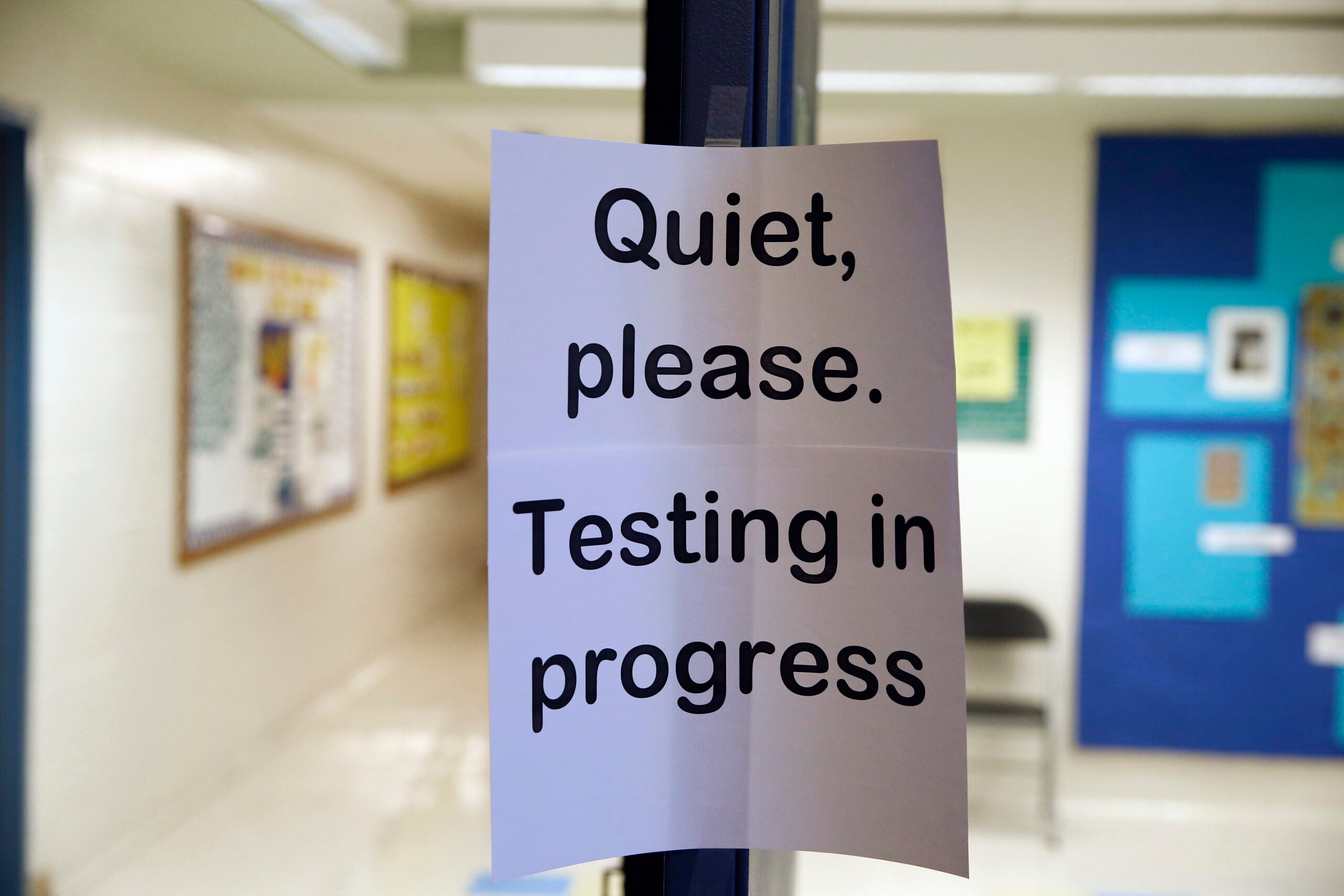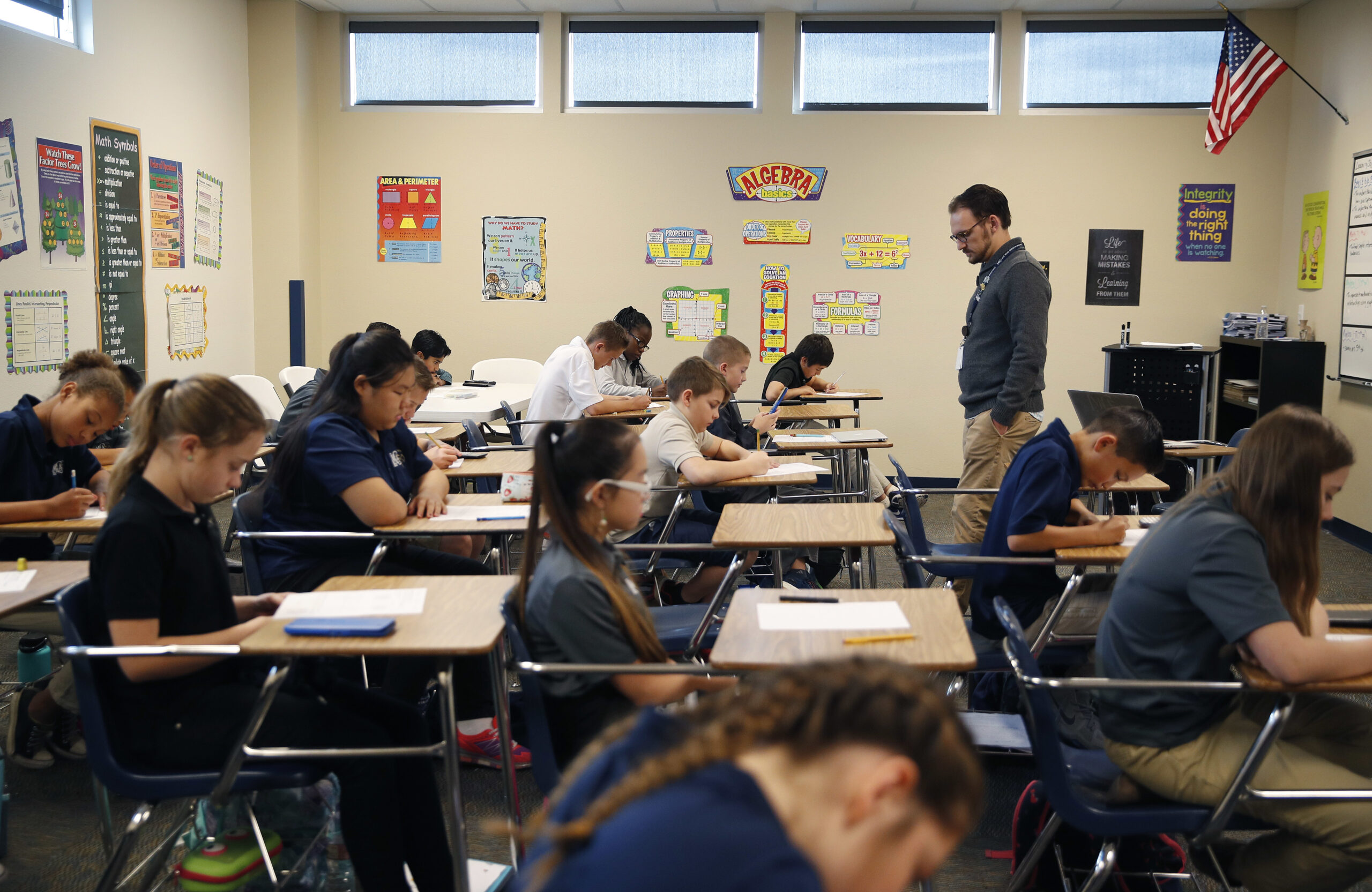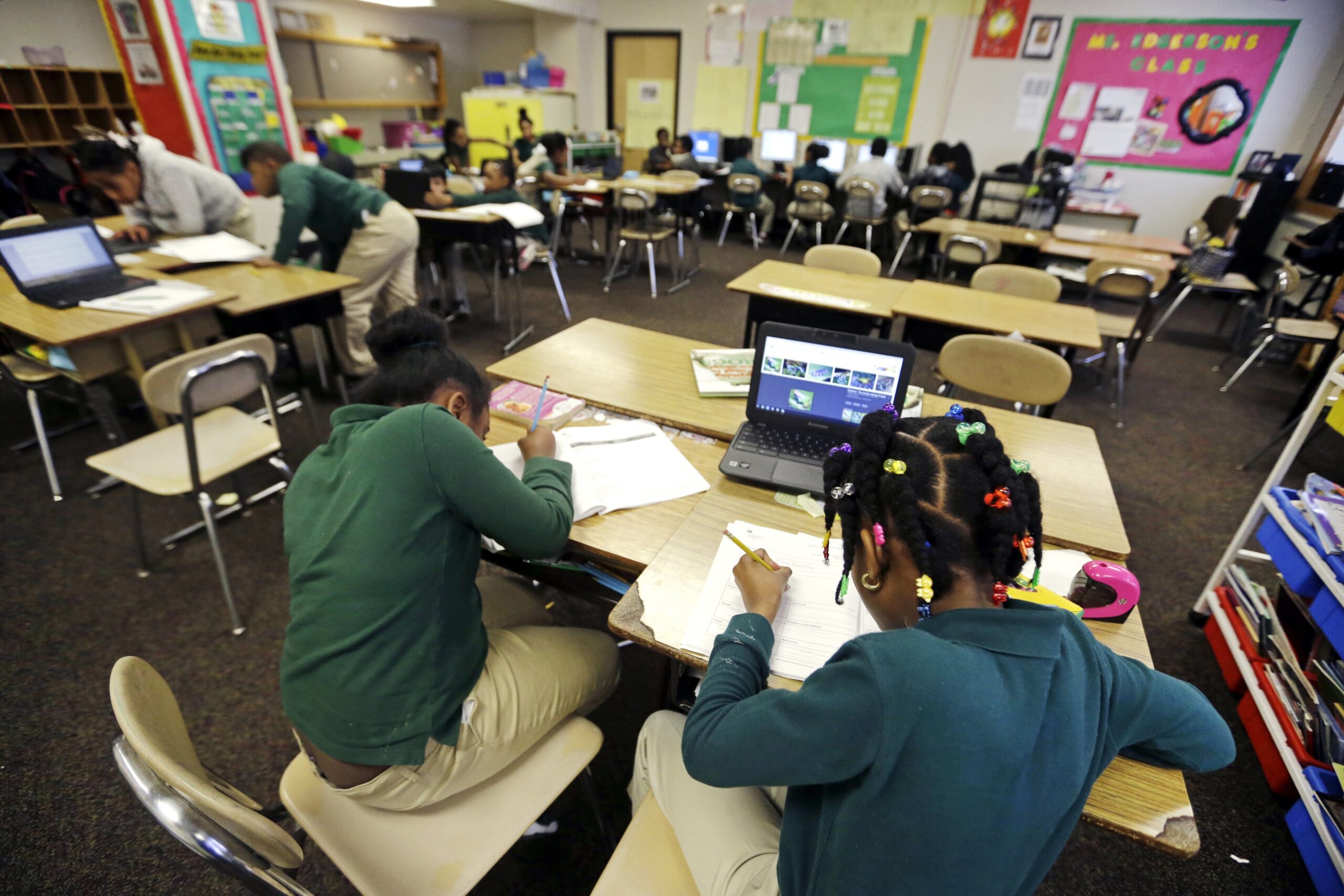Fewer than 40 percent of Wisconsin students were proficient in reading and math during the 2022-23 school year. Standardized test scores were better than the previous two years but are still not back to pre-pandemic levels.
Results of the Forward Exam, a statewide test taken by Wisconsin’s 3rd through 8th graders, the PreACT Secure test given in grades 9 and 10 and the ACT given in grade 11 showed 38.9 percent of children were proficient in reading and 37.4 percent were proficient in math last year.
When taken alone, the Forward Exam showed Wisconsin students were 39 percent proficient reading and 41 percent proficient in math.
News with a little more humanity
WPR’s “Wisconsin Today” newsletter keeps you connected to the state you love without feeling overwhelmed. No paywall. No agenda. No corporate filter.
That’s up from a low of just over 33 percent proficiency in both reading and math during the height of the pandemic during the 2020-21 school year.
Prior to the pandemic in the 2018-19 school year, 41 percent of Wisconsin students scored proficient in reading and 43.4 percent in math.
State Superintendent Jill Underly said she’s proud of this year’s test results and the increased participation rate of nearly 95 percent of students being tested.
“I am also tired of politicians claiming that our children aren’t learning because they aren’t reaching a proficiency score,” Underly said in a statement. “Instead of using test scores as a cudgel, we should all take the time to learn what a high bar proficiency on this test represents, because the truth is that our proficiency cut scores are very high in comparison to every other state in the country.”
Students in private School Choice programs had lower scores than the state averages, with proficiency rates of 22.1 percent in reading and 17.9 percent in math during the 2022-23 school year, according to DPI.
Test results vary based on race, location
But results of the Forward Exam varied greatly depending on the student’s school district, race and socioeconomic status. Wisconsin continues to have the worst white-Black achievement gap in the country.
Only 10.5 percent of Black students are proficient in reading and 8.3 percent of Black students are proficient in math. White students are 47.2 proficient in reading and 50.3 percent proficient in mathematics.
The disparity in academic achievement between Black and white students is a long-time problem.
During the 2013-14 school year, just over 15 percent of black students tested proficient on statewide exams in math, compared to 43 percent of white students, according test scores from the state Department of Public Instruction.
And the 2015 National Assessment of Educational Progress, known as the “Nation’s Report Card,” found the state had the worst achievement gap between Black and white students in 4th- and 8th-grade reading and math.
During a call with media, DPI spokesperson Abigail Swetz said schools remain on a “recovery journey” since the pandemic.
“We wouldn’t be where we wanted to be, even if we had gotten to exactly the same point as we had gotten to before, because we are always worried and always very focused about how to close these racial disparities,” Swetz said.
Swetz said DPI is working on making sure Black, indigenous and LGBTQ+ students are feeling included in schools and to increase mental health funding.
DPI says mental health services could improve scores
Gov. Tony Evers included more than $270 million to expand mental health services to schools in his proposed budget, but the funding was cut by the Republican-led Joint Finance Committee.
In his budget veto message, Evers restored $30 million of that funding.
“When we look at the disparities in achievement data, they mirror in disparities like school connectedness and that is why these focused inputs in mental health work and our affirming work can go a long way,” Swetz said.
The state’s largest school districts – with the exception of Appleton – are also performing the worst.
Students in Green Bay, Eau Claire, and Janesville did not improve their reading scores in 2022. Milwaukee Public Schools was the lowest performing school district, with 15.8 percent of students proficient in reading and 11.5 percent proficient in math.
MPS spokesperson Nicole Armendariz, said the district’s test scores demonstrate some progress, but show there is more work to do to improve academic achievement.
“Student achievement is a priority in our strategic plan, and we are working aggressively on implementing professional learning and research-based instructional strategies that will have meaningful outcomes for both staff and students,” Armendariz said.
Quinton Klabon, a senior researcher with the conservative Institute for Reforming Government, studied the DPI numbers and said Wisconsin is quickly becoming a state where disadvantaged students do not succeed.
“Cities like Green Bay and Janesville are failing to recover from the pandemic and the number of Black students below grade level would overflow Fiserv Forum,” Klabon said. “The Legislature took big steps to solve this problem by passing Right to Read. However, solutions like teacher apprenticeships and expanding high-quality schools, choice or otherwise, are critical to making Wisconsin’s schools our premier attraction for families once again.”
Laura Adams, a policy initiatives advisor with DPI, said the new law that will change the way schools teach reading beginning next year should help school districts struggling the most.
The state is spending $50 million dollars to create a new literacy office, hire reading coaches and shift away from what has been known as “balanced literacy” to a “science of reading” or more phonics-based approach to teaching reading.
“During the pandemic, some of those districts have actually invested in curriculum, and they have been training their educators in early reading, and so we know that our districts are already making areas to strengthen their systems,” Adams said.
DPI officials said there were losses from the pandemic and the recovery journey will continue.
“Students were put in a very challenging position of having to pivot quickly and need to develop additional coping strategies,” said Andrea Donegan, a school counseling consultant with DPI. “And so we continue to help those students build those coping mechanisms. There are many ways the pandemic has affected students, and it is our job to find out what that is and how we can create support going forward.”
Wisconsin Public Radio, © Copyright 2026, Board of Regents of the University of Wisconsin System and Wisconsin Educational Communications Board.





